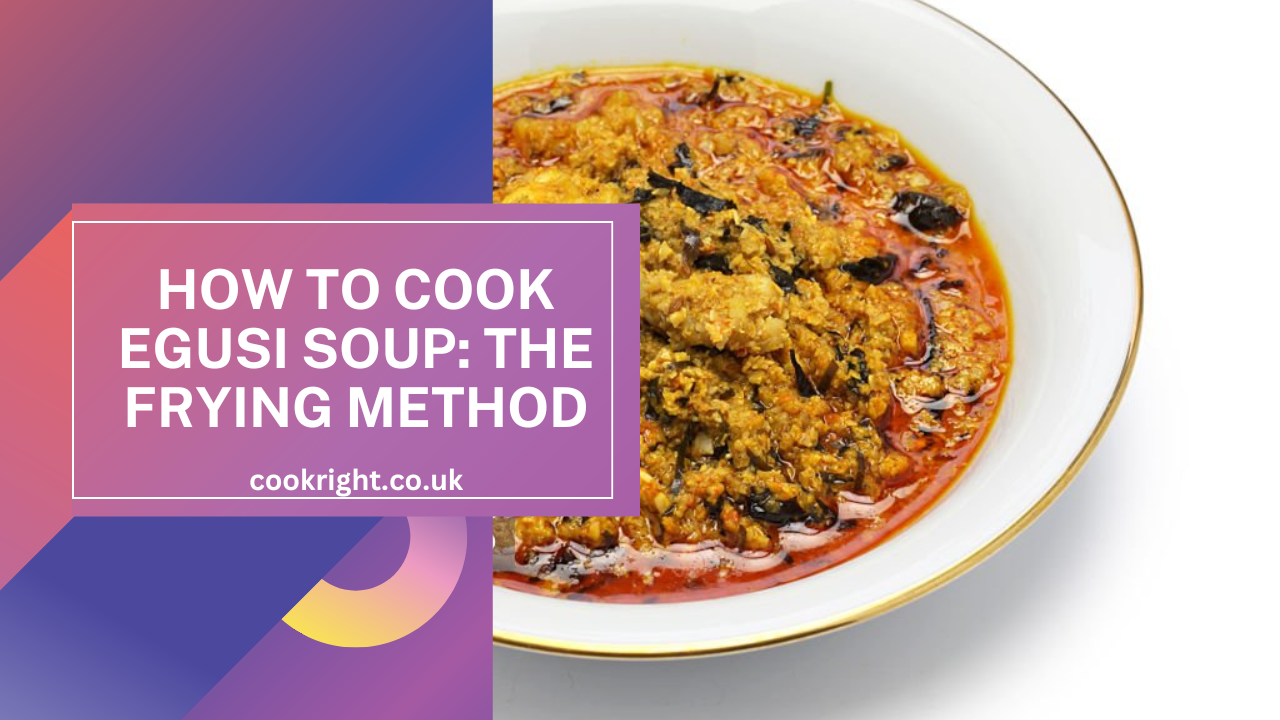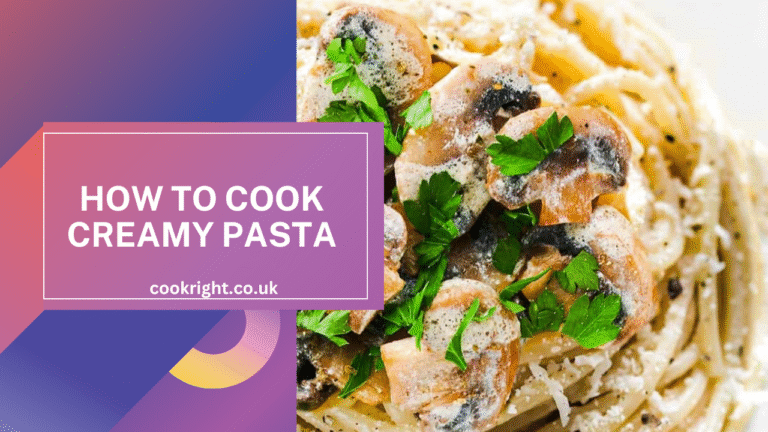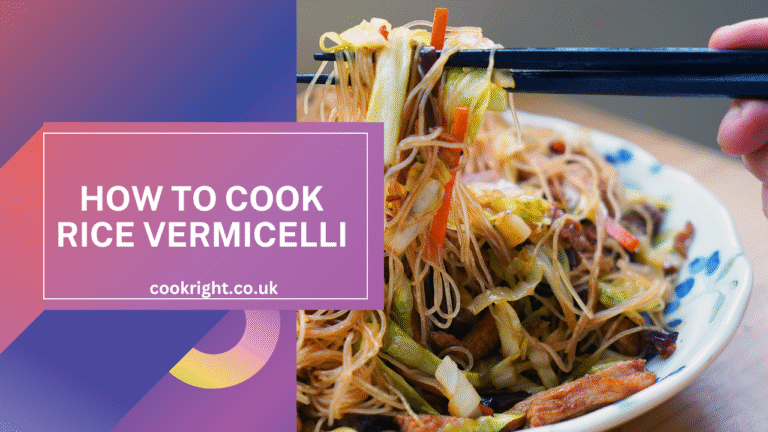Egusi soup is one of the most beloved dishes in West African cuisine, particularly in Nigeria. It’s rich, hearty, and packed with flavors that make it a staple in many households. The key ingredient, Egusi, comes from melon seeds that are ground into a powder and used to thicken the soup, giving it a distinct texture and taste. While there are various methods to prepare Egusi soup, the frying method is particularly popular for its ability to infuse deep, savory flavors. In this guide, we’ll walk you through the steps to create a mouth-watering Egusi soup using the frying method.
Ingredients You’ll Need
Before we dive into the cooking process, let’s gather all the ingredients you’ll need:
- 2 cups of ground Egusi (melon seeds)
- 500 grams of assorted meats (beef, goat meat, or chicken)
- 200 grams of assorted fish (smoked fish, stockfish, or dry fish)
- 1 cup of palm oil
- 2 cups of chopped spinach, ugu, or bitter leaves (your choice)
- 2 tablespoons of ground crayfish
- 1 medium onion, finely chopped
- 2-3 scotch bonnet peppers or habanero peppers (adjust to your spice preference)
- 2 tablespoons of ground uziza seeds (optional for added spice)
- 2 seasoning cubes or bouillon powder
- Salt to taste
- 5 cups of water or stock (meat or fish stock is preferable)
- 1 tablespoon of ground locust beans (iru or ogiri) – optional but recommended for an authentic taste
Step-by-Step Cooking Instructions
Step 1: Prepare Your Ingredients
- Season and Cook the Meats and Fish: Start by seasoning your assorted meats with salt, seasoning cubes, and some chopped onions. Add water and cook until the meats are tender. For tougher cuts like goat meat, use a pressure cooker to save time. Once cooked, set the meat and stock aside. If using stockfish, soak it in hot water to soften, then add it to the meat pot.
- Blend the Peppers and Onions: Blend your scotch bonnet peppers and a portion of the onions into a smooth paste. This pepper mixture will add both heat and flavor to your soup.
- Prepare the Egusi Paste: In a separate bowl, mix the ground Egusi with a small amount of water to form a thick paste. This step ensures that the Egusi forms lumps when fried, creating the characteristic texture of the soup.
Step 2: Fry the Egusi
- Heat the Palm Oil: Place a large pot on medium heat and add the palm oil. Allow the oil to heat up slightly, but don’t let it smoke; this helps to release the natural flavors of the palm oil.
- Sauté Onions and Pepper Mixture: Add the chopped onions to the hot oil and sauté until translucent. Next, add the blended pepper mixture and fry until the oil starts to separate from the mixture. This step is crucial as it intensifies the flavors and reduces the raw taste of the peppers.
- Add the Egusi Paste: Gradually add the Egusi paste to the pot, stirring continuously. Fry the Egusi paste in the pepper mixture, breaking it up into small lumps. This process takes about 10-15 minutes. You’ll notice the Egusi beginning to form curds and absorb the flavors of the fried pepper and onions.
Step 3: Build the Soup
- Incorporate the Meats and Stock: Once the Egusi has fried adequately, add the cooked meats, fish, and the reserved stock. Stir well to combine. If the soup appears too thick, add a bit more water or stock until you achieve your desired consistency.
- Season the Soup: Add the ground crayfish, locust beans, ground uziza seeds (if using), and additional seasoning cubes or bouillon powder. Adjust the salt to taste. Allow the soup to cook for another 10 minutes, letting all the ingredients meld together.
- Add the Vegetables: Finally, add your choice of vegetables. Spinach, ugu, or bitter leaves are all excellent options. Stir the vegetables into the soup and cook for an additional 5 minutes. The goal is to slightly wilt the vegetables without overcooking them to maintain their vibrant color and nutritional value.
Step 4: Simmer and Serve
- Allow the soup to simmer on low heat for a few more minutes, giving all the flavors time to blend perfectly. Check the seasoning one last time and adjust if necessary.
- Serve your Egusi soup hot with your favorite swallow, such as pounded yam, eba, fufu, or semovita.
Tips for the Perfect Egusi Soup
- Avoid burning the Egusi: When frying the Egusi paste, keep the heat on medium and stir continuously to prevent it from burning. Burnt Egusi can give the soup a bitter taste.
- Customize your proteins: Feel free to mix and match proteins as per your preference. Snails, cow skin (kpomo), and offals can also be added for an authentic Nigerian Egusi soup experience.
- Palm oil quantity: The amount of palm oil can be adjusted to your liking. While traditional Egusi soup is quite rich in oil, you can reduce the amount for a lighter version.
Best Ways to Enjoy Egusi Soup
Egusi soup is incredibly versatile and can be enjoyed with a variety of sides, making it a true staple in many West African households. Traditionally, it is served with swallows—starchy side dishes that are perfect for scooping up the soup. Popular swallows include pounded yam, eba (made from garri), fufu, semovita, and amala. Each of these pairs beautifully with Egusi soup, allowing the rich, savory flavors to shine.
For those who prefer something lighter, Egusi soup can also be enjoyed with rice, plantains, or even on its own as a hearty stew. Whether you’re eating it with your hands in the traditional way or using a spoon, the comforting taste of Egusi soup is sure to make every meal feel like a special occasion. Don’t forget to pair it with a chilled drink—like palm wine or a refreshing glass of water—to complete the experience!
Conclusion
Egusi soup is a versatile and delicious dish that brings a taste of West Africa to your table. The frying method, while a bit more involved, delivers an Egusi soup that is deeply flavorful with a delightful texture. By following these steps and tips, you’ll master the art of cooking Egusi soup, and it’s sure to become a favorite in your household. Enjoy this hearty meal with friends and family, and let the rich aromas and tastes remind you of the warmth of home.
Feel free to adjust the spice level and ingredients to match your preference, and enjoy the delicious journey of making Egusi soup!




